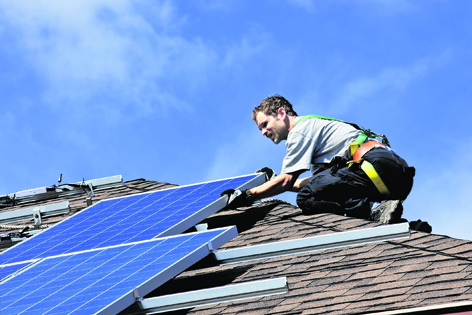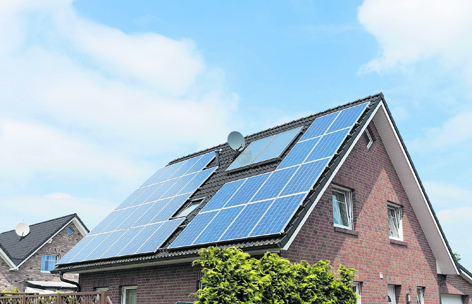1. Solar panels are relatively inexpensive and straightforward to install compared to many other types of renewable-energy technology. Panels are usually fitted to a pitched roof, but they can be mounted on a wall, or a frame on the ground or a flat roof. Although they work on cloudy days, the panels need a sunny position to be most effective, so a south-facing position, which gets sun most of the day, is ideal.
2. There are two types of solar panel: ones that generate electricity, called solar photovoltaics or PV, and ones that heat water, called solar thermal. With both, you’ll cut your energy bills and CO2 emissions, but the benefits don’t end there.
 3. Solar PV panels (the most popular type) can also earn you money through the government’s Feed-In Tariffs scheme. Providing your PV system qualifies, the scheme pays you for the electricity you generate and use and also for any surplus electricity you supply to the National Grid. According to the Energy Saving Trust (www.energysavingtrust.org.uk), an average 4kWp domestic PV system costs between £5,000 and £8,000 and, in the south of England, should generate approximately enough electricity for a typical household.
3. Solar PV panels (the most popular type) can also earn you money through the government’s Feed-In Tariffs scheme. Providing your PV system qualifies, the scheme pays you for the electricity you generate and use and also for any surplus electricity you supply to the National Grid. According to the Energy Saving Trust (www.energysavingtrust.org.uk), an average 4kWp domestic PV system costs between £5,000 and £8,000 and, in the south of England, should generate approximately enough electricity for a typical household.
4. The Energy Saving Trust says that a typical solar water-heating system costs around £3,000-£5,000, but the savings you make will be moderate. As well as the solar panels, you’ll need a boiler or immersion heater to give you additional hot water and sometimes to make the water heated by the panels hotter, especially in winter. You may also have to change your boiler and hot-water cylinder to ones compatible with the panels.
5. If your home is leasehold, you may need permission from the freeholder to instal solar panels. The roof usually belongs to the freeholder. Restrictions may also apply if you live on designated land, and if the building is listed. Ask your local council what you can and can’t do. Where planning restrictions apply and solar panels aren’t allowed, solar roof tiles or slates may be acceptable to the council’s planning department.
